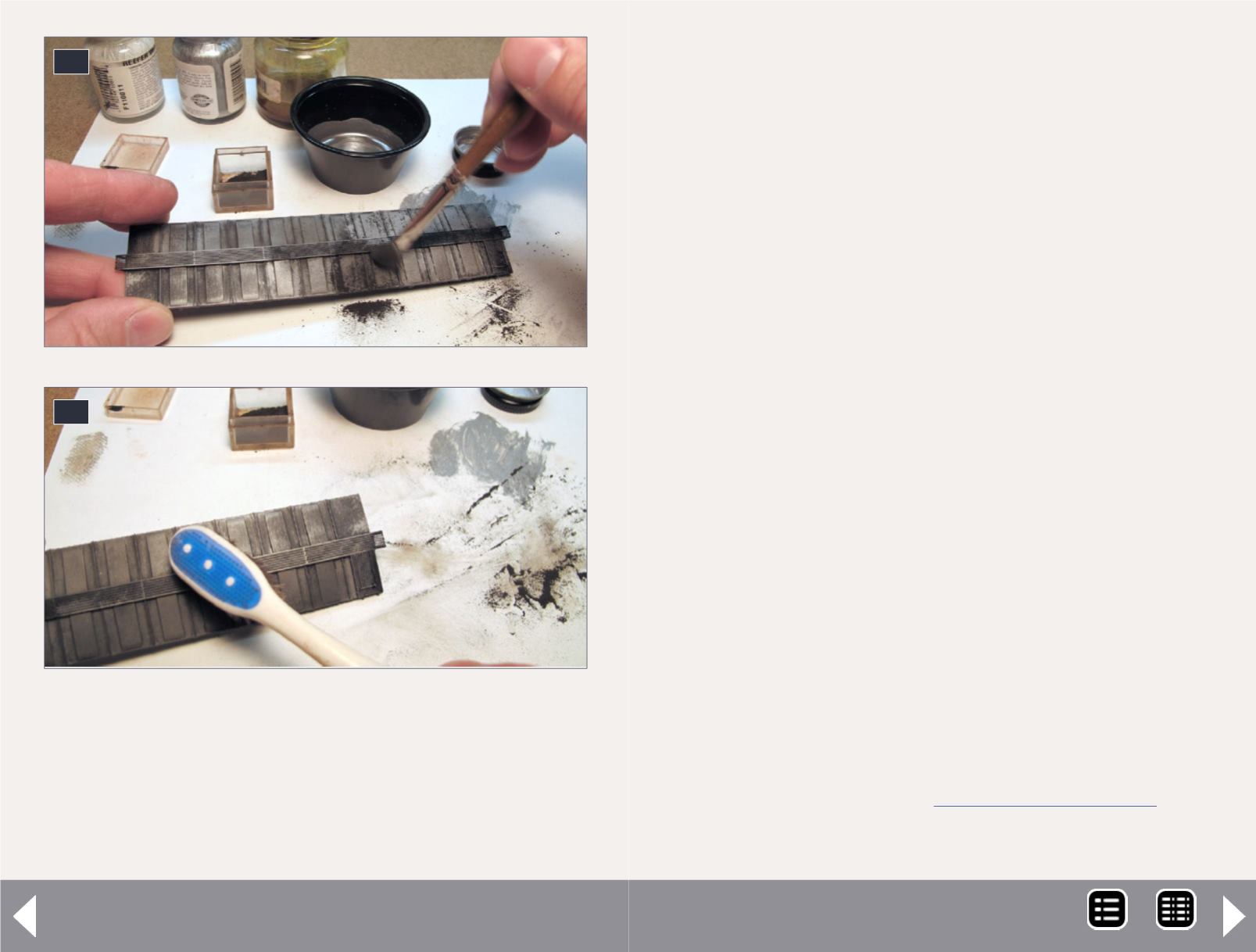
To finish the roof, I first apply a coat of Floquil Old Silver, and mix
in Bragdon’s Powders Black. The black paint pigment tones down
the silver to a more gray color, better representing galvanized
metal. I rough up the surface using an old toothbrush. I apply
this mixture several times until I get the appearance I want, then
seal everything with a sprayed coat of about 75% Dullcote and
25% Floquil Black.
After the roof is weathered to my satisfaction, I secure it to the
car with a few small dabs of CA and reinstall the coupler draft
gear and couplers. Polish the wheel treads with a Dremel tool,
spinning the wheelsets in the trucks using a Dremel No. 531
brush at about 5,000 rpm. I then secure and test the trucks
and wheels for interference, and then test the coupler height.
I lubricate the couplers with Kadee graphite and weather the
couplers with Bragdon’s Powders Brown.
To finish the model, I add a modified placard decal from the
Microscale 1940s Placard Decal set and place it on the car’s rout-
ing board (the small board near the bottom of the door). I apply
a few hand-drawn chalk marks using an artist’s white pencil and
seal them on the car with one light spray of Testor’s Dullcote. I
use a nice pencil from the “Stampin’ Up” company; you can find
one or one like it at a well-stocked scrapbooking store.
Finally, I declare the car complete and ready for service, sit back
and admire my creation, and have a cold beer to celebrate.
Conclusion
This is a fun and easy project, and I hope you enjoy making your
own cars. If you have any questions about this project, please
don’t hesitate to contact me at
19
18. The Bragdon pigments can be “scrubbed” into the
roof surface. Work over a hard surface so the powders
can be picked up.
19. I use an old soft toothbrush to blend the colors
slightly. The technique leaves a rough, mottled
appearance that looks like corroded metal.
18
Seaboard B8 & B9 - 12
MRH-Jun 2014


